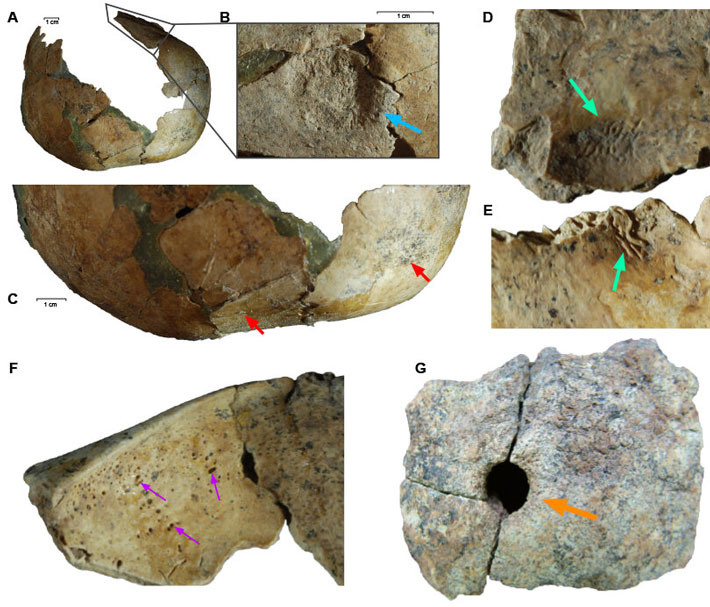 ANKARA, TURKEY—Phys.org reports that an international team of researchers including N. Ezgi Altinişik of Hacettepe University has analyzed DNA obtained from 13 people who were buried in Çayönü Tepesi, which is located in the Upper Tigris region of Mesopotamia, between 8500 and 7500 B.C., when people began to transition from hunting and gathering to farming. The study suggests that two men, five women, two boys, and three girls in the study had ancestors from the South Levant, Central Anatolia, and Central Zagros. The remaining woman’s ancestors came from Caucasus/Zagros, the researchers explained. Examination of the bones also indicates that the skull of one of the children had been shaped, and may have been cauterized as part of a medical procedure. The researchers concluded that the Upper Tigris region may have been a hub for migrants and traders during the Neolithic period. Read the original scholarly article about this research in Science Advances. To read about the world's first named author, who was Mesopotamian royalty, go to "Priestess, Poet, Politician."
ANKARA, TURKEY—Phys.org reports that an international team of researchers including N. Ezgi Altinişik of Hacettepe University has analyzed DNA obtained from 13 people who were buried in Çayönü Tepesi, which is located in the Upper Tigris region of Mesopotamia, between 8500 and 7500 B.C., when people began to transition from hunting and gathering to farming. The study suggests that two men, five women, two boys, and three girls in the study had ancestors from the South Levant, Central Anatolia, and Central Zagros. The remaining woman’s ancestors came from Caucasus/Zagros, the researchers explained. Examination of the bones also indicates that the skull of one of the children had been shaped, and may have been cauterized as part of a medical procedure. The researchers concluded that the Upper Tigris region may have been a hub for migrants and traders during the Neolithic period. Read the original scholarly article about this research in Science Advances. To read about the world's first named author, who was Mesopotamian royalty, go to "Priestess, Poet, Politician."
Genetic Study Suggests Neolithic Mesopotamia Was a Melting Pot
